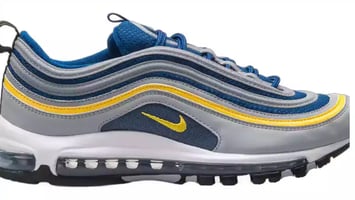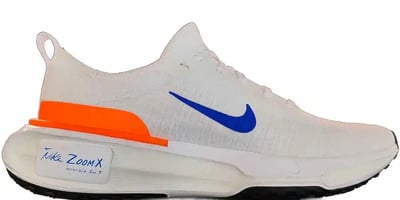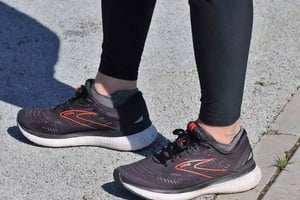People describe the Nike Air Max 97 shoes in several ways. If you're familiar with them, you may...
What are the Best Running Shoes for Shin Splints? (2024 Guide)

I was between the second and third kilometre of my daily run when some discomfort started forming in my shin and calf. I wrote off the experience as the usual aches and pains of getting older while trying to stay fit.
As I kept going, the discomfort started turning into pain. It began to radiate into my knee and ankle. It got sharper, especially in the shin.
I stopped the run to check on my leg. Had I picked up an injury? My leg was so tender to the touch that I nearly screamed, just trying to see what was happening.
Then the swelling started. Getting back home was the longest walk I can ever remember taking. It felt like I’d broken something.
When the pain didn’t get better the next day, I went to get it checked out. The doctor gave me a complete exam, including X-rays. “Good news!” she declared. “You didn’t break anything. Your structure looks good. That means you’ve likely got shin splints.”
Who Develops Shin Splints While Running?
About 1 in 5 runners will experience something like me at some point. This condition tends to happen more often when people start a running routine or decide to increase their training intensity.
I fell into the second category. Although I’d been running daily for about six months, I’d pushed myself to start completing 7k each time.
When I spoke with my doctor about why I’d developed shin splints, she said overuse was a possibility. She also asked me to bring in my running shoes. When there isn’t enough cushioning or support, the injury risks can significantly multiply.
That’s why it is important for all runners to find a shoe that fits their training. When your body has the support to be physically active, you can train with fewer worries.
What to Look for When You Shop Running Shoes for Shin Splints
If you already have shin discomfort, you need a pair of running shoes that will let you manage the condition. For those who have not yet had this injury occur, the goal is to prevent it from happening.
Runners can accomplish both outcomes by looking at the following features in all shoe brands.
1. Cushioning
Appropriate cushions will absorb the shock of each foot impact to reduce the wear and tear on your shins. Options like the Asics Gel Series or the Brooks Ghost have advanced systems that could be beneficial in preventing or dealing with this issue.
2. Arch Support
For runners with high arches or flatter feet, the shoe design must provide appropriate support to keep your gait flowing naturally. It helps to look for options with extra cushioning or motion control based on your foot structure.
In some situations, it might be necessary to have custom insoles or orthotics made to help support your feet as you run.
For cushioning and comfort, consider running shoes from New Balance or Hoka.
3. Stability
Some runners have their feet roll inward or outward as part of their gait. These conditions are called overpronation (inward) or underpronation (outward). Investing in running shoes with stability features can help your structure stay balanced to prevent injuries like shin splints.
I recommend checking the heel counter for firmness if you face this issue. It’s the part of the shoe that wraps around your heel. When it is strong, you’ll notice an immediate difference when running.
The Saucony Guide is an excellent shoe to consider when stability and support are necessary. You can also find models from Asics in the Kayano and Nimbus lineup that could fit your needs.
4. Traction
Some runners prefer hard surfaces for their workouts, like concrete or asphalt. Shoes with more cushioning are more suitable to those conditions, and most brands offer several choices with different structural supports for consideration.
If you like to run trails, the best shoes for you will have extra grip and stability for the different conditions you might face when you’re not on concrete.
I like the Brooks Cascadia for trails, especially with its rock plate to protect your feet from sharp objects.
5. Weight
Heavier shoes will increase the load on your legs during a run. This issue can contribute to shin splints developing. It might help to switch to a lighter product that offers the same cushioning and support needed to prevent impacts from contributing to the condition.
Some Runners Might Consider Consulting with a Specialist
If you have tried to deal with shin splints and investing in new running shoes hasn’t provided relief, it could be helpful to have a gait analysis conducted. This information will let you know more about your foot mechanics and how they impact your workout style.
In return, you’ll have more information about selecting the best shoes for running. A physical therapist can also recommend specific shoe brands or models that work with your condition.
Shin splints can be painful. It is an injury that can limit your training and prevent you from returning to it – if you let it. By investing in running shoes that support your physical requirements, you can have more fun out there.



